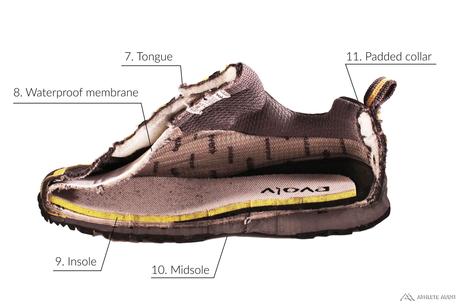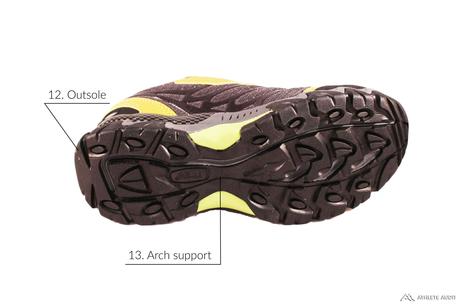Parts of an Approach Shoe



- Lacing – Most approach shoes have durable, rounded laces for easy closure. Some, like this particular pair, use BOA lacing for quick and efficient tightening
- Eyelet guards – Ensures that the laces won’t rip from brushing against rocks, brush, or the like
- Upper – Often breathable, lightweight, and resilient to abrasion. Leathers, synthetics, canvas, and mesh are the most popular materials
- Toe cap – Important for scrambling/climbing and for those who drag their toes
- Heel stabilizer – Keeps your heel stable and secure
- Heel loop – For clipping your shoes on a carabiner to carry or for ease when slipping them on
- Tongue – Padded and breathable for comfort
- Waterproof membrane – Some approach shoes may have a waterproof membrane to prevent excess moisture from soaking your feet
- Insole – Basically a pillow for your feet providing comfort and support, some insoles may be removable
- Midsole – Lies between the insole and outsole, provides cushioning and is often thicker in the heel
- Padded collar – Wraps around your ankle for added comfort and ankle support
- Outsole – The most important part of an approach shoe, it should have flat tread and sticky rubber for scrambling and talus-hopping
- Arch support – For added comfort when hiking
Learn how to choose approach shoes here




